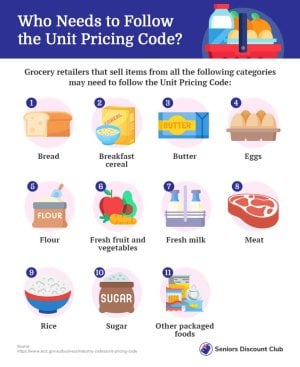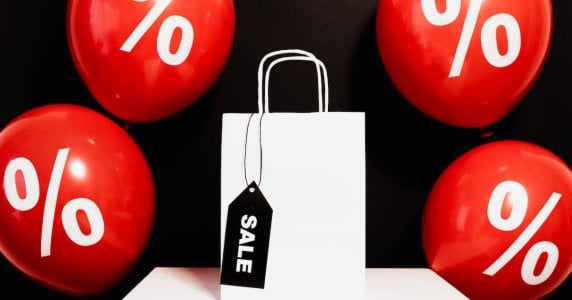How swapping grocery items can help you save big bucks
- Replies 3
Here is one thing all shoppers have in common: we all love a bargain, especially when it comes to anything involving our weekly grocery shop.
And while the cost-of-living pressures continue to rise, we see fewer bargains and more price hikes in our local stores.
However, all is not lost, as there are simple ways to ease the burden of shopping for essentials at the supermarket.
Many of us go into autopilot mode when shopping for groceries. After all, a visit to the supermarket is hardly an exciting activity. But being aware of your surroundings can help you swap out some of the regular items that make their way into your trolleys for budget-friendly finds. This, in turn, can help you save some serious cash.
Money expert and Canstar’s Editor-at-Large Effie Zahos spent a day visiting several local supermarkets to compare the prices. She discovered that some of the things she found could be bought for half the cost.
‘When it comes to groceries, we get stuck in the same situation: buy the brands, go to the same supermarket,’ she told reporters before adding how she’s aware that convenience always wins when it comes to shopping.
‘We’re all probably guilty of buying a bag of lettuce, but it is $10 per kg, and when I weighed one lettuce, it was equivalent to $4 per kg,’ she continued.
‘This blew me away; in a bag, they were more expensive than being loose.’
One way to combat this is through unit pricing.
A quick recap: Unit pricing is a labelling system required by law under the Competition and Consumer Act 2010. This industry code was created to help consumers compare prices and find the best value for money. It also sets out rules around where, how, and for what products unit pricing is required.
In short, shoppers can compare the prices of similar products even if they come in different sizes, brands, or packaging. They are also calculated to the nearest dollar and cent, making them helpful in finding the best deal on groceries.
Unit pricing’s effectiveness was supported by the consumer group CHOICE, which surveyed over a thousand grocery shoppers to see if they could find the best-value products during their weekly grocery shop.
According to the survey, it was found that when unit pricing information was included, customers could select products with the best value for money by 74 per cent. More details about unit pricing, including how to calculate it, can be read here.
Ms Zahos also advised to ditch big-name brands and look for similar items from lesser-known companies because they’re cheaper.
‘You seek out the ones that are similar for half the price, and you can save yourself a truckload,’ she explained.
Similarly, consider going to different supermarkets regularly to check if there are cheaper deals for the same items. Finance expert Joel Gibson shared that shopping at multiple supermarkets lets you pick the best specials and prices at each store.
‘As we all know, Coles, Woolies and ALDI have weekly specials announced every Monday and Wednesday. So, if you check the catalogues before your grocery shop, you can buy the items on your list wherever they’re ‘super cheap’ that week,’ he said. You can find more of his money-saving advice here.
In a recent report, Ms Zahos shared some marketing signs to watch out for while shopping. She said these tactics are designed to make consumers spend more, and she has also fallen victim to some of them.
#1: ‘Buy two and get the second one for 20 per cent’
‘It sounded too good to pass up, but did I really need another pair of shoes? Probably not,’ she explained.
She added: ‘Remember, just because something is on sale doesn’t mean you will make a saving. If anything, it just goes to show how much prices are usually marked up.’
#2: ‘Only one left’ or ‘Limited time only’
Also described as ‘fear-based marketing’, this tactic taps into the fear of missing out on a deal. This creates a sense of urgency that gives people the ‘extra nudge’ to make the purchase.
‘If you feel tempted by a message like this, then stop and think about whether you really need it or if scarcity is making you want it,’ Ms Zahos stated.
#3: Price influencing or the ‘decoy effect’
‘Have you ever bought a more expensive item because the price of another influenced you? If so, you’ve probably experienced the decoy effect,’ Ms Zahos explained.
According to an experiment by National Geographic, the pricing of another item influences consumers on what they buy.
Ms Zahos continued: ‘The key to not falling for the decoy effect is to only buy what you need and don’t be swayed by what you perceive to be better value.’
You can watch the experiment below:
#4: ‘Get a free gift with your purchase’
This marketing tactic has been around for ages, but it still dupes many customers into spending more.
‘The question to ask yourself is whether you would buy the product on its own merits. If the answer is yes, by all means, go for it,’ Ms Zahos advised.

What are your top tips for saving at the grocery store? Let us know in the comments below!
And while the cost-of-living pressures continue to rise, we see fewer bargains and more price hikes in our local stores.
However, all is not lost, as there are simple ways to ease the burden of shopping for essentials at the supermarket.
Many of us go into autopilot mode when shopping for groceries. After all, a visit to the supermarket is hardly an exciting activity. But being aware of your surroundings can help you swap out some of the regular items that make their way into your trolleys for budget-friendly finds. This, in turn, can help you save some serious cash.
Money expert and Canstar’s Editor-at-Large Effie Zahos spent a day visiting several local supermarkets to compare the prices. She discovered that some of the things she found could be bought for half the cost.
‘When it comes to groceries, we get stuck in the same situation: buy the brands, go to the same supermarket,’ she told reporters before adding how she’s aware that convenience always wins when it comes to shopping.
‘We’re all probably guilty of buying a bag of lettuce, but it is $10 per kg, and when I weighed one lettuce, it was equivalent to $4 per kg,’ she continued.
‘This blew me away; in a bag, they were more expensive than being loose.’
One way to combat this is through unit pricing.
A quick recap: Unit pricing is a labelling system required by law under the Competition and Consumer Act 2010. This industry code was created to help consumers compare prices and find the best value for money. It also sets out rules around where, how, and for what products unit pricing is required.
In short, shoppers can compare the prices of similar products even if they come in different sizes, brands, or packaging. They are also calculated to the nearest dollar and cent, making them helpful in finding the best deal on groceries.
Unit pricing’s effectiveness was supported by the consumer group CHOICE, which surveyed over a thousand grocery shoppers to see if they could find the best-value products during their weekly grocery shop.
According to the survey, it was found that when unit pricing information was included, customers could select products with the best value for money by 74 per cent. More details about unit pricing, including how to calculate it, can be read here.
Ms Zahos also advised to ditch big-name brands and look for similar items from lesser-known companies because they’re cheaper.
‘You seek out the ones that are similar for half the price, and you can save yourself a truckload,’ she explained.
Similarly, consider going to different supermarkets regularly to check if there are cheaper deals for the same items. Finance expert Joel Gibson shared that shopping at multiple supermarkets lets you pick the best specials and prices at each store.
‘As we all know, Coles, Woolies and ALDI have weekly specials announced every Monday and Wednesday. So, if you check the catalogues before your grocery shop, you can buy the items on your list wherever they’re ‘super cheap’ that week,’ he said. You can find more of his money-saving advice here.
In a recent report, Ms Zahos shared some marketing signs to watch out for while shopping. She said these tactics are designed to make consumers spend more, and she has also fallen victim to some of them.
#1: ‘Buy two and get the second one for 20 per cent’
‘It sounded too good to pass up, but did I really need another pair of shoes? Probably not,’ she explained.
She added: ‘Remember, just because something is on sale doesn’t mean you will make a saving. If anything, it just goes to show how much prices are usually marked up.’
#2: ‘Only one left’ or ‘Limited time only’
Also described as ‘fear-based marketing’, this tactic taps into the fear of missing out on a deal. This creates a sense of urgency that gives people the ‘extra nudge’ to make the purchase.
‘If you feel tempted by a message like this, then stop and think about whether you really need it or if scarcity is making you want it,’ Ms Zahos stated.
#3: Price influencing or the ‘decoy effect’
‘Have you ever bought a more expensive item because the price of another influenced you? If so, you’ve probably experienced the decoy effect,’ Ms Zahos explained.
According to an experiment by National Geographic, the pricing of another item influences consumers on what they buy.
Ms Zahos continued: ‘The key to not falling for the decoy effect is to only buy what you need and don’t be swayed by what you perceive to be better value.’
You can watch the experiment below:
#4: ‘Get a free gift with your purchase’
This marketing tactic has been around for ages, but it still dupes many customers into spending more.
‘The question to ask yourself is whether you would buy the product on its own merits. If the answer is yes, by all means, go for it,’ Ms Zahos advised.
Key Takeaways
- Making simple switches when doing your food shopping can help you to save money.
- Switching to a store brand rather than a branded product can help you save more.
- Unit pricing helps tremendously in finding the best deals and cheaper alternatives for similar items.










